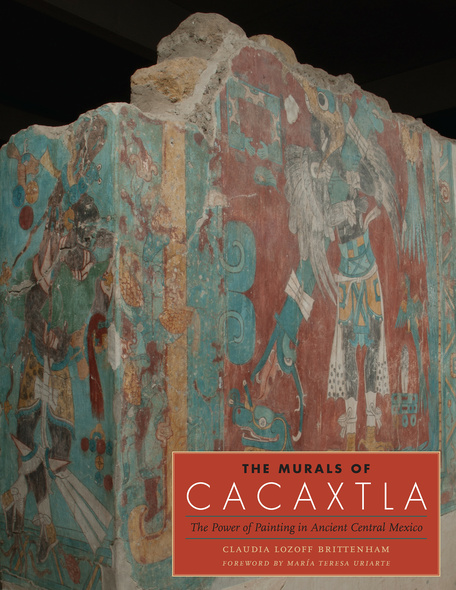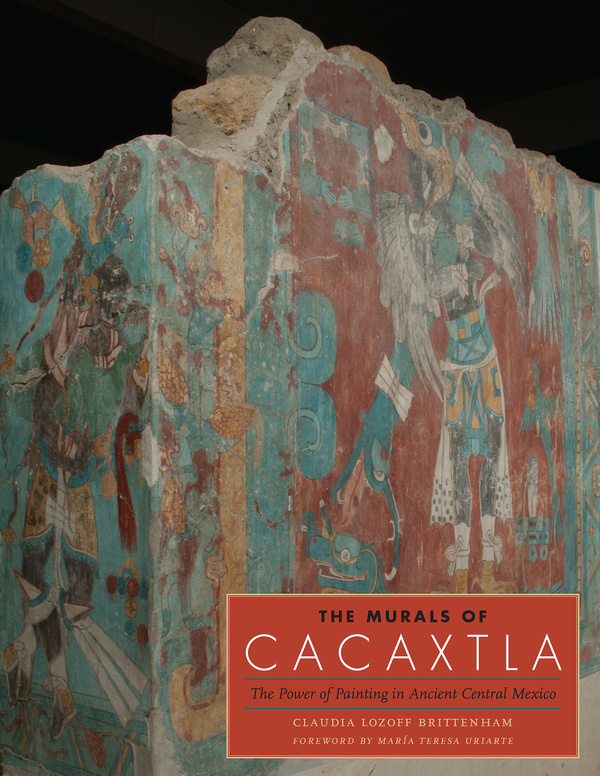The Murals of Cacaxtla
The Power of Painting in Ancient Central Mexico
Presenting the first comprehensive art historical study of some magnificent Mesoamerican murals, this book demonstrates how generations of ancient Mexican artists, patrons, and audiences created a powerful statement of communal identity that still captures the imagination.
Honorable Mention, ALAA Book Award, Association for Latin American Art/Arvey Foundation, 2016
Between AD 650 and 950, artists at the small Central Mexican city-state of Cacaxtla covered the walls of their most important sacred and public spaces with dazzling murals of gods, historical figures, and supernatural creatures. Testimonies of a richly interconnected ancient world, the Cacaxtla paintings present an unexpectedly deep knowledge of the art and religion of the Maya, Zapotec, and other distant Mesoamerican peoples. Painted during a period of war and shifting alliances after the fall of Teotihuacan, the murals’ distinctive fusion of cosmopolitan styles and subjects claimed a powerful identity for the beleaguered city-state.
Presenting the first cohesive, art historical study of the entire painting corpus, The Murals of Cacaxtla demonstrates that these magnificent works of art constitute a sustained and local painting tradition, treasured by generations of patrons and painters. Exhaustive chapters on each of the mural programs make it possible to see how the Cacaxtla painting tradition developed over time, responding to political and artistic challenges. Lavishly illustrated, The Murals of Cacaxtla illuminates the agency of ancient artists and the dynamics of artistic synthesis in a Mesoamerican context, offering a valuable counterpoint to studies of colonial and modern art operating at the intersection of cultural traditions.
List of Illustrations and Tables
Foreword
Acknowledgments
Introduction
1. Cacaxtla in Context
The Acropolis and Its Paintings
Greater Cacaxtla-Xochitécatl
Diego Muñoz Camargo's Description of Cacaxtla
Problems of Evidence
Between Powerful Neighbors
Cacaxtla among the Epiclassic City-States
Art and Identity
Chaos Again
2. The Murals
Materials and Techniques
Artists
Chronology
3. The Feathered Serpent and the Captive Stair: Polemics of Style
The Serpent Corridor
Feathered Serpents
Aquatic Borders
Feathered Serpents and Aquatic Borders
The Afterlife of the Feathered Serpent
The Captive Stair
Text and Image
A Foreign Style?
Reconsidering Captive Art
Polemics of Style
4. The Temple of Venus: Astral Bodies
Style
Venus/Star Symbolism
Bilingualism and Polyvalence
5. The Battle Mural: Violence in the Plaza
Time and Inevitability
Doubling
Patterns of Naming
The Dangers of Difference
The Battle Mural in Mesoamerican Context
Burial
6. The Red Temple: Maize in the Underworld
A Merchant God and His Wares
Painting Luxury
Of Maize, Cacao, and Men
Supernatural Landscape
7. Structure A: The Mountain of Sustenance
The Portico and Jamb Murals: A Portrait of the Altepetl
Guardians and Antecedents
Names and Dates
Duality and Difrasismo
Sustenance Mountain
Continuity and Change
Painted Earth: The Inner Mural
Later Interventions: Blood and Clay
Buried Paintings
Conclusion
Appendix: Radiocarbon Dates for the Cacaxtla Murals
A Review of Radiocarbon Dating and Reporting
Early Classic Radiocarbon Dates at Cacaxtla
Radiocarbon Dates Associated with Mural Painting
Chronology of the Cacaxtla Paintings
Notes
Bibliography





